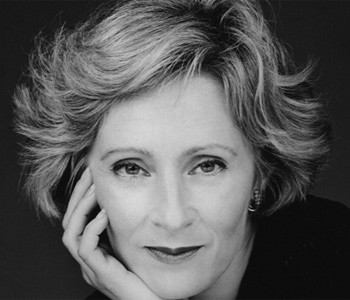Juliann Sivulka
Ad Women: How They Impact What We Need, Want, and Buy
Prometheus Books
415 pages, 6 x 9 inches
ISBN 978 1591026723
For most of the twentieth century advertising portrayed women in narrow roles — as dim-witted sex objects, as perky young things in search of a man, or as one-dimensional homemakers eager to serve their husbands. These popular images projected in the national media of Mrs. Consumer, the one who is born to shop, were themselves also born at this same time. An unreal world created by the image-makers, the admen. In fact, one of advertising’s most enduring clichés is the male executive who tries to defend his proposal with “my wife thinks . . .” The story goes that it was the adman, acting from peculiar, limited, and masculine ideas of female character, who responded to what he believed to be the aspirations and lifestyle of the typical homemaker.
For all of men’s efforts, however, it has been women who were involved in the new industry not only as consumers, but in a myriad of commercial practices. Women, not men, have been responsible for the increasing amount of woman-centered advertising – of soap, fashion, food, and house wares. Women encouraged consumption as part of feminine concerns with nutrition, health, and household efficiency. Women worked for manufacturers to promote standardized goods and sanitary packaging under the guise of good domestic practice. Many women played a pivotal role as editors of newspapers and magazine service departments, as they promoted new inventions and styles, cooperated with advertisers, mentioned brand names in recipes and advertising columns, conducted market investigations, and even put their names on products. In broadcasting, women also worked as information brokers, interlocutors, and tastemakers, as they wrote advertising spots, acted as spokespersons, and produced commercials.
In the process, women transformed the body and soul of advertising. From Mathilde C. Weil in the 1870s, one of the earliest known advertising agents, to ad executives Mary Wells and Charlotte Beers, Ad Women tells the story of how women have risen to the top of the advertising profession. The book places these figures in the larger contexts of business and economic developments, the entry of women in the professions, and women’s history. With each wave of the feminist movement, women took up reform, overcame barriers, and carved out a niche in advertising agencies and the new mass-market industries over the course of the twentieth century. Today women make up nearly 60 percent of those working in advertising and public relations, as well as countless organizations in industry, media, retail, and fashion. Women account for more than one half of account managers in ad agencies. Women also outnumber men in journalism, communications, and advertising higher education programs. And every year more women enter the ad business. Holding key marketing and advertising positions, women have shaped the basic promotional appeal of accounts more than ever before in history.

The power of the commercial images of Mr. and Mrs. Consumer, and the vigorous critique against them, obscure the many forces and the agency of women that gave form to American consumer culture.
Although books on advertising history examine representations of gender, advertising history is a gendered narrative reflecting mostly men’s rather than women’s experience in advertising. To retell the history of advertising, Ad Women emphasizes that women took their place alongside men and played an important role in the development of the American economy as both consumers and ad women.
The book is the culmination of some ten years of research. My interest in the topic began as an examination of how advertising grew in America, how products and brands were produced and promoted, and how manufacturers used advertising in ever more sophisticated ways to convince Americans, especially women, that buying their products would improve their lives. I continually returned to a 1903 issue of Profitable Advertising, which published a feature called “Women Workers in Publicity.” This appeared at a time when women increasingly claimed a public role once reserved for men. From there, I began to question how, in the space of the twentieth century, the advertising business went from a handful of women in a man’s world to one in which women work in virtually every mass-consumer goods industry in America.
By the 1890s, advertisers and manufacturers had begun to recognize that women not only bought beauty products but also most of the mass-produced household’s food, clothing, and other goods for the home. As most of the goods sold at retail were marketed to women, it followed that if women followed their instincts, they should come close to knowing what to say to other women in advertisements. And what the woman did not buy, she influenced through her father and brothers, her husband and sons.
A small group of professional and managerial women positioned themselves as offering the women’s viewpoint in the new mass-market consumer industries and services. This was true in a myriad of commercial practices – the fashion trade, advertising, merchandising, magazine and newspaper publishing, broadcasting, home economics, as well as consumers and consumer activists. Women wrote reams of persuasive copy for department stores, coordinated fashion shows, and managed mail-order operations. Others worked as “outside” consultants and publicists. Still, other women worked on the corporate side as advertising managers, product designers, and home economists. By the 1930s, women gained both a presence and a degree of power in consumer advertising, which complicates the notion that advertising was a man’s world.
Secondly, women’s entry into the advertising world should also be seen as a larger part of the professionalization that occurred between the late nineteenth-century and the early twentieth century. Similar to the entry of women in law, medicine, and architecture, the entry of early women in the advertising profession needs to be understood in terms of identity. Women redefined women’s work for their own purpose. But, at the start of the twentieth century, when men took firmer control over advertising as the profession matured, women also found themselves increasingly excluded by contrivances of professionalization such as professional schools, licensing procedures, and trade organizations.
Finally, the ad women’s entry into business happened in waves. Their numbers did not build steadily and slowly, as women struggled with a predictable amount of discrimination. The study begins in the 1880s, when an entirely new business in America, the advertising agency, began to take form and opened up professional opportunities for women, a process which continues to the present day. I distinguish three key periods in the history of advertising that are deeply entwined with economics, politics, and women’s history in modern America. First, 1880-1920 marks the key period in which the modern consumer economy emerged parallel with the rise of the advertising industry and the suffrage movement. Then, both the 1920s and 1970s represent eras of major social change for women. Women contended with male prejudice and male power in the advertising profession. But with each wave of the feminist movement, women took up reform, overcame barriers, and carved out a niche in advertising agencies and the new mass-market industries.
In the 1870s, Mathilde Weil volunteered to secure advertising for a German society paper owned by the brother of her friend. Although the advertising manager could not offer any advertising for her publication, he could favor an order for another New York newspaper. Knowing nothing of the business, Mathilde Weil offered the order to the paper with the question: “How will you recompense me for the same?” She soon realized that there was a better living in selling advertising space for several newspapers and magazines than writing for them. For the next two decades, she was not just a widow, but became the first known ad woman in America, buying and selling advertising space in the new industrial age. In the 1880s, proving her business ability, Mathilde Weil established a general advertising agency, the M. C. Weil.
This is just one of the stories of women who succeeded in an entirely new profession, the advertising agency, that began to take form in the United States after the Civil War. From stories of female copywriters, designers, editors, and marketers to the ascent of women to boardrooms as heads of multi-billion dollar firms and ad houses, this book introduces the reader to adwomen who worked in marketing, advertising, retailing, publishing, and public relations. Ad Women throws light on some of the pioneers, the well-known personalities, and the not so-well known women who made it happen.
Unfortunately, these women who had an impact on the industry and on audiences, who influenced the advancement of other women, and who had a distinct vision of the future, left few records of their professional lives. But articles in trade journals, account files, personnel records, and personal papers provide some insight into them. Although the sources are fragmentary, and for the most part limited to white middle-class women, they do open a window to how ad women working in mass-consumer industries closely collaborated with publishers, mass media, manufacturers, and retailers.
Around the turn of the twentieth century, the singular recognition of women as primary consumers resulted not only in agencies but in other mass-produced consumer industries hiring a new ensemble of businesswomen to promote their products aimed at the women’s market. Over the course of the twentieth century, the women’s viewpoint had become a dynamic aspect of modern consumerism, stimulating the buying and selling of brand-name, packaged goods and services. Virtually every widely accepted product had been promoted through advertising. Advertising’s financial support of newspapers and magazines also powered the publishing and later broadcast industries – our primary sources of ideas, news, and entertainment. With women a more powerful force than ever before in the marketplace and workforce, the feminine viewpoint became the nexus connecting consumption, manufacturers, and advertising in modern America. But the making of American consumer culture was a complicated, interactive process that meshed information and demands from buyers and other data on consumer preferences to production, marketing, and advertising – a culture in which ad women had significant impact on what we want, need, and buy – that the world came to see as the very heart of American life.

Women’s entry into the advertising world should also be seen as a larger part of the professionalization that occurred between the late nineteenth-century and the early twentieth century. Similar to the entry of women in law, medicine, and architecture, the entry of early women in the advertising profession needs to be understood in terms of identity.
The aim of Ad Women is to shed light on the impact that women, as both producers and consumers, had on the making of consumer culture. The power of the commercial images of Mr. and Mrs. Consumer, and the vigorous critique against them, obscure the many forces and the agency of women that gave form to American consumer culture. This is the story of the possibilities and limits of the American dream. It is also America’s story of the middle-class and a mass-consumer society. And it is the story of how women took up reform, overcame barriers, and carved out a niche.
The response to the book has been encouraging. Along with being positively reviewed as a must read book for historians, sociologists, marketing communications professionals, and consumers alike, it has also struck a chord with the ad industry. Advertising legend Jerry Della Femina called the book “sweeping, insightful, encyclopedic” and “a must-read in any advertising class in the world.”
To me, the book is most important for examining the fact that women were actually a part of advertising history in the larger context of business and economic development, and for conveying the radical nature of that view. Ad Women is not an adjustment of the existing story of advertising, but it rather presents an entirely new narrative.




We don't put paywalls. We don't distract you with ads. We don't sell your data.
Please help to keep this running!